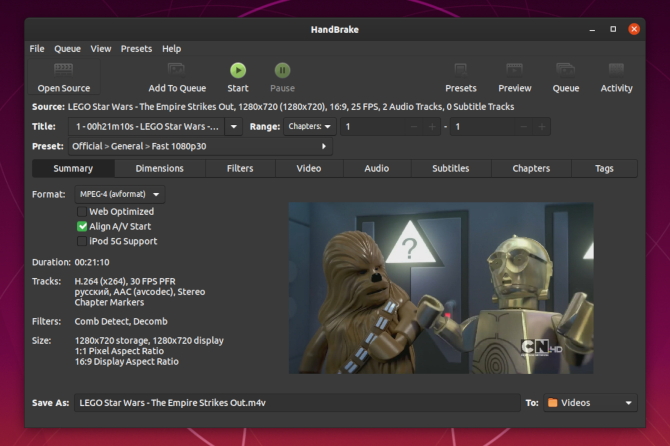
- #How to convert video files on ubuntu server how to
- #How to convert video files on ubuntu server archive
- #How to convert video files on ubuntu server code
please help me in this and thanks in advance. Thanks for this help but i want to create web application like u do that i get uploaded images and i want to make a video streaming from them but i failed and this is my code. NET C# c# create video file c# create video from images c# video c# video creation c# video tutorial csharp create video

G.FillRectangle(brushList, (i % width) * 0.5f, (i % height) *2, i % 30, i % 30) G.FillRectangle(brushList, (i % width)*2, (i % height)*2, i % 30, i % 30) G.FillRectangle(Brushes.Black, 0, 0, width, height) īrush brushList = new Brush Since we are creating 375 bitmaps (frames) below, our video will be 15 seconds in length.īitmap image = new Bitmap(width, height) Thanks to the frame rate of 25 FPS, which we have stated above when we set up the open()-method, we know that 25 graphics result in 1 second of video. By use of the modulus operator (%), and the random number generator, we will create different frames which will result in a nice animation.
#How to convert video files on ubuntu server code
That’s what the following code snippet does. Now we can arbitrarily write as many frames (in the form of bitmap graphics) as we like. The higher the bitrate, the larger the video and the better the quality. The mentioned rate of 1000000 corresponds to a video bitrate of 1 Mbps. The fourth parameter specifies the frames per second of the video, the fifth specifies the videocodec and the sixth defines the bitrate of the video. Writer.Open("en.code-bude_test_video.avi", width, height, 25, VideoCodec.MPEG4, 1000000) Ī brief explanation of the open()-method. VideoFileWriter writer = new VideoFileWriter() Then we create an instance of the VideoFileWriter class and open a new video file using the open()-method. We hereby specify the resolution of the video.

Those, who only look for the solution, should now scroll to the end of this article.įirst, we create two variables for the width and height of the video. I will develop and explain the code step by step. Note: From now on all the following code snippets belong to this method. Private void buttonCreateVideo_Click(object sender, EventArgs e) (I know that this isn’t the perfect way, but it’s a good way to create a simple skeleton for the substantial code of this tutorial – the C# video writer code.) For this reason I have created a button on the application’s main form and will subsequently use the button’s click method. In the next step we create a method in which want to write the C# code for video creation. The first thing what you should do is to integrate the AForge library by writing the using directive. If you’ve also done this, we can start with the code. (After we changed the target architecture this now should be “YourProjectFolder\bin\x86\Debug”.) Beginning with the code All files in this folder have to be copied to the output folder of your Visual Studio project. You can find these in the folder “Externals\ffmpeg” inside the AForge archive. No products found.In the next step, we need a few more dlls from the AForge archive. Short status report – you should have created a project, added a reference to the library, set the target platform to x86 and the target framework version to 3.5 or lower now. You can also make this setting on the properties page of your project. Here you have to explicitly specify x86 as target architecture. By default this should be set to “Any CPU”. On the other hand you may have to change the target architecture of your project. This changes can be made in the properties of your project. This must not exceed version 3.5, because the AForge libs we’re using aren’t compatible with.
#How to convert video files on ubuntu server how to
(If you don’t know how to add references, have a look at this short article.)īefore we go on, two other settings need to be made to your project. Copy this into the folder which contains your Visual Studio project. However, for this tutorial, we only need the library.

#How to convert video files on ubuntu server archive
In the release folder of the archive you will find all AForge libraries. Unpack the previously downloaded AForge archive. Next you create a new project, I decided on a WinForms project, and wait until the Visual Studio has arranged everything. (For the following tutorial I’m using Visual Studio.) Create a project Now open your Visual Studio or an alternative program, that you want to use to write your program. zip-file, which contains “(libs only)” in it’s filename. On the downloadpage you have to select that. Both can be found by clicking the below link. Preparationsįor the following tutorial you need the library and its FFMPEG libraries. Using the AForge library, which I have used in the already in the C# webcam tutorial, this is going to be relatively simple. I’m writing about how you can create video files in C # from individual images or bitmaps.


 0 kommentar(er)
0 kommentar(er)
